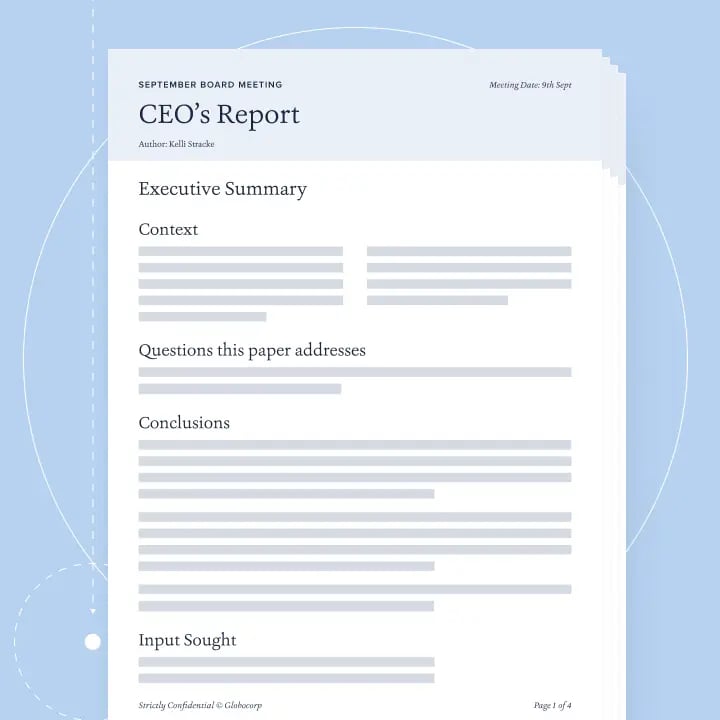This article is part of a series exploring great communication in business.
In 1973, Xerox was riding high. With near-total control of the booming photocopier market, the company was surfing a wave of innovation and posting record revenues, earnings, and profits.
In that same year, a team of brilliant scientists, engineers, and programmers at the company’s Palo Alto Research Center (PARC) invented the first personal computer — the Alto, complete with mouse, graphical display, ethernet networking, and scalable type.
So why do we still think of Xerox as “the photocopier people” rather than the birthplace of modern computing?
Because they failed to commercialise their new product, allowing Apple and IBM to swoop in and launch the digital age.
This failure was largely due to the isolation of the Alto team from senior management and other departments. They weren’t talking to each other when they needed to, and when they did talk, the visionary technologists in Palo Alto and the business managers in Connecticut were speaking different languages. The Alto team couldn’t see the commercial potential in the product that their colleagues could have told them about, and they weren’t able to get the buy-in of the budget holders to take it further.
Great ideas — even ones that might change the world — don’t always float to the surface. And there’s no guarantee they’ll be acted on and developed if they do.
Why can’t you cross the ocean in a dinghy?
In business, how we say something can matter as much as what we say.
There’s an ocean between the executive committee and the front line, and it’s often shrouded in a thick fog caused by layers of reporting and millions of KPIs. In conditions like these, it’s easy for poorly communicated messages to get lost.
The trouble is that, when we know what we’re communicating is important — like a project update for the executive committee, or a request for resources from the board — something comes over us.
We can be a clear and engaging storyteller in person, renowned for our slick slide decks, or a master of the pithy email. But when we write these important board and management reports, we stop communicating normally and start communicating the way we think we’re supposed to. Our tone becomes formal. We try to sound clever and authoritative in the words we choose and the way we use them.
Any of us can fall into this trap — and we often do, if the state of board and management reporting is anything to go by. It’s only natural; authority figures and professionals like lawyers, doctors, and academics do it all the time, with long, complicated words, sentences, and paragraphs.
We all know that serious subjects demand formal writing. If you want other people to take you and your topic seriously, you need to sound smart, right?
Well, no. What you get when you use overly sophisticated language is lengthy reports that are hard to read and even harder to care about — meaning that information is skimmed or misunderstood, and insights are missed.
How can you make your writing easy to follow?
In all business communication, the goal is to make your message as easy to follow as possible. You want the quality of your thinking to shine, and that means you need to write like a human. You need to sound like you.
There are many ways to do that, but here are the four rules that have worked best for us, and our clients, over the past 15 years.
Rule 1: use short and simple words and sentences
Over 70 years ago, writer Rudolf Flesch figured out that long words and sentences place extra strain on our working memory — extra cognitive load. When we use complex language, our readers are more likely to skim-read or misunderstand our writing.
Not only do shorter words and sentences make life easier for your audience, but they also help you sound smarter. Countless studies across countries and cultures, from Princeton to the University of Tokyo, have found that if you ask someone to score the intelligence of an author based on a passage of text, the authors who use shorter words and sentences are the ones who come out on top.
Research shows that when you use a longer word, readers are more likely to skip the shorter words that follow it. You can see this in action in the following two sentences, which say the same thing in very different ways:
- Sentence 1: “The recently implemented categorical standardisation procedure on waste oil should not be applied before 1 January 2015.”
- Sentence 2: “Do not use the new waste oil standards before 1 January 2015.”
In which sentence was the “not” more obvious?
Rule 2: bin the jargon
Jargon may save time, but it can also cause problems by making your thinking inaccessible and crossing people’s wires. You may know what “Give me an ETA on the TLDR, ASAP” means, but your reader may not. Worse still, they may think it means it means something else, wasting everyone’s time. Does “SME” mean “subject matter expert” or “small to medium-sized enterprise”, for example?
Journalists take a particularly hard line on this. As Financial Times senior business writer Andrew Hill sees it, “It’s obviously a no-no for us but, in business, jargon can be used to obfuscate — to make it hard to see what is really going on.” Although it has its place in certain highly specialized environments, for example within surgical teams, “it becomes dangerous when it gets out in the wild and then sticks,” he says.
So, beware of using jargon. And, if you absolutely must, be sure to define it clearly wherever it first appears.
Rule 3: keep it concise
When communications are long and rambling, two things can happen (often at the same time). Readers skim the information without taking it in, and they become suspicious. Is the author trying to bury critical information? Or do they lack the smarts to sort wheat from chaff?
Writing, like a diamond, sparkles more when it’s cut. So, to keep you from straying into “information for information’s” sake, the cause of many a bloated board or management report, set a sensible word limit. And then hold the red pen yourself, or give it to someone else if you can, to trim your writing down to size.
Word limits usually mean you’ll have to miss some things out, but don’t skip any of the key questions you’re trying to answer. It’s a bit like organising a wedding guest list. You might not have space for everyone on the family tree, but if you want to avoid drama you won’t invite one cousin and not the others. If in doubt, cut detail, not breadth.
Rule 4: break up your text with signposts
Focusing on formatting may feel superficial, but when readers are short on time and overwhelmed with information, paragraph breaks and subheads make it much easier for them to see the shape of your argument and know where to dive in.
For subheads, you can use the key questions that have structured your thinking — the ones you’ve answered at a high level in your executive summary. It helps the reader but it also helps to keep you on track and avoid rabbit holes, muddled answers, and repetition.
Try not to use more than five headings, because research has shown that our brains have to work too hard to deal with more. When reports have too many headings, it’s difficult for readers to follow the writer’s logic and keep hold of the narrative thread.
How do you get everyone to sound like a human, all the time?
You cannot expect people to become great writers just because you’ve told them how.
In an ideal world, every business writer would have a veteran newspaper editor sitting at their side, constructively pointing out where they could improve and helping them to fine-tune their language.
But as editors are in short supply, our AI writing and thinking platform Lucia can help. Not by doing management’s writing for them, but by holding a mirror up to what they’ve written and helping them to make it shine before it lands in your inbox or board pack.
Lucia gets report writers off to a strong start with templates based on Board Intelligence’s Question-Driven Insight Principle. These templates lay out the key questions that the paper needs to address in a clear and logical structure that is easy for the reader to follow. By mapping these questions out visually, the templates also help report writers to work out how wide and deep they need to go with the answers.
Then, Lucia can help to refine the writing — nudging the authors to revisit unnecessarily complicated words or sentences and sharing tips to help them improve their reports’ readability score. Lucia will also tell them when they’ve exceeded the word count limit and where reports can be cut down to size.
In doing so, it can create a new norm of clear, natural, “human” communication, where the quality of your team’s thinking speaks for itself — and where great ideas can flourish.

A thinking and writing platform that helps you to write brilliantly clever and beautiful reports that surface breakthrough insights and spur your business to action.
Find out more


